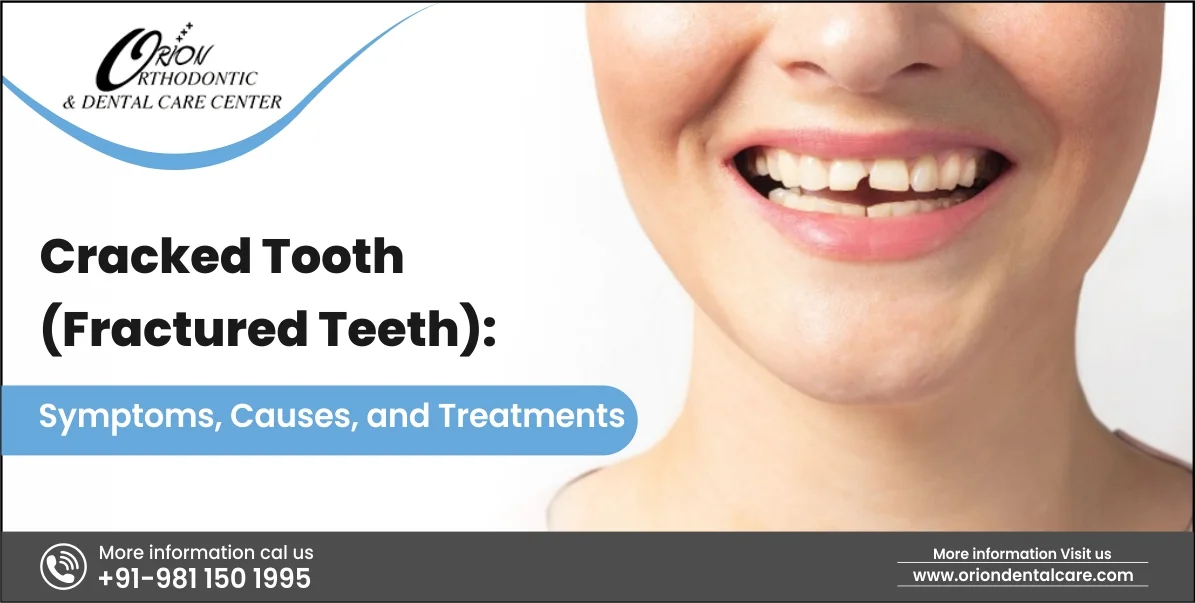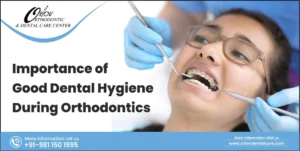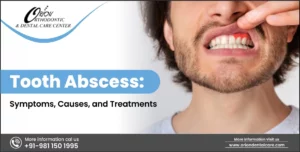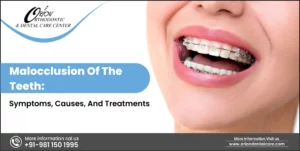When a tooth’s structure is fractured, broken, or split, it is known as a cracked tooth. Tooth decay can weaken the structure of the mouth, bite down on a hard object, trauma to the face or mouth, or even habits like grinding your teeth can cause this. A broken tooth can hurt when you bite down or chew, make you sensitive to heat or cold, or cause you to have pain sometimes. Treatment choices could include dental bonding, a crown, or, in more extreme situations, extraction, depending on how severe the crack is. In order to stop more harm from occurring and to ease discomfort, early detection and treatment are crucial. In this blog, we will delve deeper into what a cracked tooth is, its various signs and symptoms, what causes it, and ways to prevent and treat it.
Understanding Cracked Tooth (Fractured Tooth)
A fracture or break in the tooth’s enamel, dentin, or both is what defines a cracked tooth as a dental condition. These fractures can vary in severity from small, superficial cracks that only impact the outer layer of enamel to larger, more deeply embedded fractures that may even penetrate to the pulp’s nerve tissue. There are numerous reasons why teeth crack. Cracks may appear right away if there is trauma to the mouth or face, such as from an accident or sports injury. In addition to this, overuse of teeth as tools or biting down on hard objects can cause excessive force on the teeth over time, leading to cracks. Tooth decay that is left untreated also weakens the tooth structure, increasing the likelihood of fracture even with normal biting forces.
A cracked tooth can exhibit various symptoms that may vary from person to person. Based on the extent and location of the crack,the symptoms can differ. When biting or chewing, patients may feel pain or discomfort, especially when the bite pressure is released. Due to the possibility that the fracture may reveal underlying nerve tissue or dentin tubules, sensitivity to hot or cold temperatures as well as sweet or acidic foods is common. On the other hand, some fractures might not cause any symptoms at first and only show up when a dentist examines a patient. In order to stop additional damage and maintain the health and function of the tooth, early detection and treatment of cracked teeth are essential. Treatment options vary based on the severity of the crack and how it affects the tooth’s structure, from crown placement or dental bonding to root canal therapy or extraction.
Types of Cracked Tooth
Cracked teeth can be categorised into certain types. Here’s the categorization:
- Oblique supragingival cracks: Crown-only cracks usually painless, not extending beneath the gums.
- Oblique subgingival cracks: Painful cracks extending under the gumline, requiring crown exposure and restoration.
- Split tooth: Tooth splits in two, often saving only one part, typically restored with a crown, possibly needing a root canal.
- Oblique root cracks: Beneath the gum line, often requiring extraction due to hidden damage.
- Fractured cusp: Chewing surface breaks, commonly near dental fillings.
- Vertical apical root cracks: From root to crown, often painful, usually necessitating tooth removal.
Signs and Symptoms Cracked Tooth (Fractured Teeth)
Depending on the extent and location of the crack, a tooth’s signs and symptoms can change. Typical signs and symptoms include:
- Pain or discomfort when biting down on food or releasing the bite pressure is one of the most prevalent symptoms. The afflicted tooth may be the only source of this sharp pain.
- A fractured tooth may not always cause pain. It may come and go, especially if you’re chewing or if the temperature changes.
- Eating or drinking anything hot, cold, or sweeter may make a cracked tooth more sensitive. Even after the stimulus is eliminated, the sensitivity could persist.
- If the crack goes below the gum line, it may irritate the gum tissue nearby, resulting in swelling or inflammation in that area.
- In certain situations, a crack on the surface of a tooth may be felt or seen. But not every crack is apparent without the use of dental tools or magnification.
- If a crack extends to the inner layers of the tooth, bacteria may be able to enter and cause the tooth to discolour or darken.
- Unlike during the actual biting process, some people may feel pain or discomfort only when they release bite pressure.
- When a crack is severe enough to compromise the integrity of the tooth, the affected tooth may become noticeably looser or more mobile.
You must keep an eye out for these symptoms, and contact a doctor immediately if you notice any.
Causes of Cracked Tooth (Fractured Teeth)
Teeth can fracture for a variety of reasons. Among the reasons why a tooth can crack are:
- Putting too much pressure on a food item or grinding your teeth excessively can physically damage a large filling and weaken the structure of the remaining teeth.
- A tooth may also crack due to an abrupt change in temperature. This might occur, for instance, if someone drinks tea and then, in an attempt to relieve the burn, down a glass of cold water.
Treatment Options For Cracked Tooth (Fractured Teeth)
The location of the crack and the degree of the damage determine the best course of action. If a crack is small and doesn’t hurt, it might not need to be treated.
However, in more serious cases, treatment might become necessary. Standard treatment options include the following:
- Placing plastic resin on the cracked or broken portion of a tooth and filling it with a crown, a cap that completely encloses the cracked tooth, in a procedure known as bonding.
- In the worst situations, where a crack has reached the tooth’s pulp, root canal therapy might be required. An entire tooth extraction may be necessary if a tooth is severely cracked.
In order to assess the damage, a dentist might have to extract a filling if a tooth has one that has cracked.
Preventing Cracked Tooth (Fractured Teeth)
While it’s not always possible to avoid cracked teeth, there are some tips that can help prevent them in the first place. These include:
- Steer clear of tough-to-chew foods like ice and unpopped popcorn.
- Stop practices that can harm teeth, like biting or grinding pens; attempting to avoid clenching teeth; and using mouthguards to protect teeth when participating in sports
- A person may want to discuss wearing a mouthguard at night with their dentist if they clench or grind their teeth while they sleep.
Conclusion
In conclusion, for a prompt diagnosis and suitable treatment, it is essential to comprehend the different kinds of cracked teeth and the symptoms and indicators that go along with them. In order to stop additional damage and relieve discomfort, it is important to seek prompt dental care, regardless of the severity of the fracture, whether it is a small crack that only affects the crown or a more serious break that extends into the root. Keep in mind that early intervention can preserve the tooth and restore its function, highlighting the significance of routine dental examinations and proactive oral hygiene routines.




